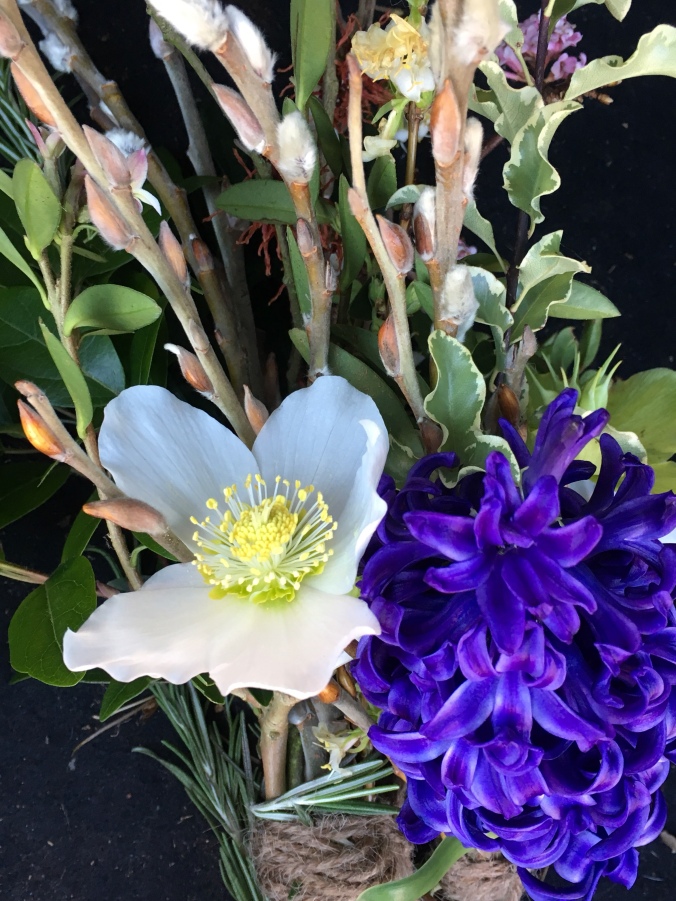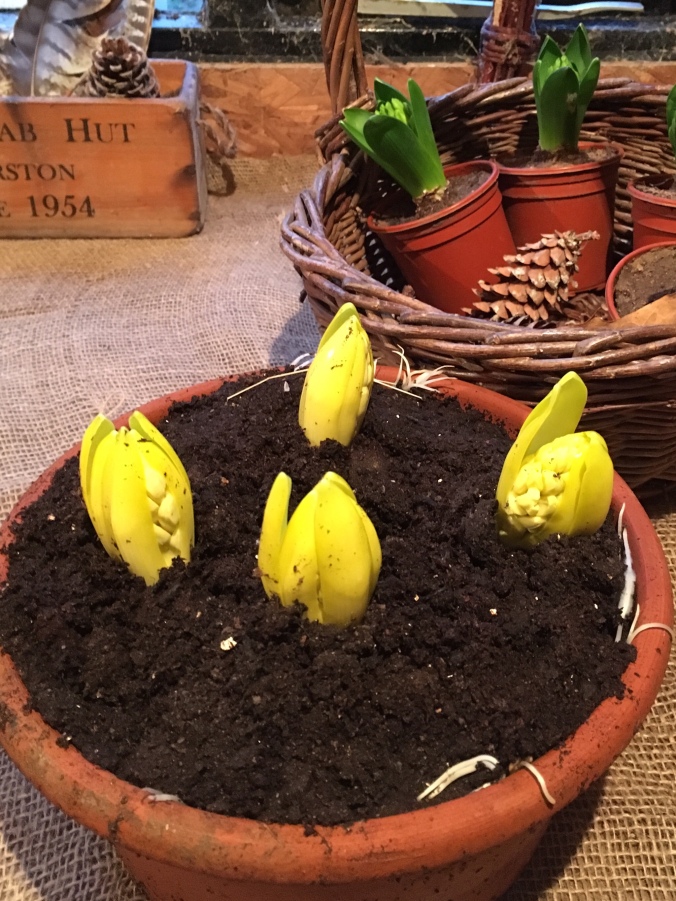
Reasons to be cheerful. The first spring lamb has been born in crossroads field at the bottom of our lane. It’s been a daily ritual, walking downhill to check on the flock. Each time, we are hopeful. And then today, we stand at the gate and scan the field. And there, by the hedge, one tiny white lamb. Newborn and softly steaming in early morning sunshine. A joy. A reassurance. After all the family illness of the past few months, worry and fretting, one tiny lamb sends a subliminal message- all will be well. The season moves on and the familiar sights and sounds of our daily life returns to normal. We have weathered the storm and spring is coming.

There’s been some catching up to do in the potting shed. Seed packets are inspected, catalogues perused, and a list produced. It’s a start. Little pots of snowdrops are dotted along the windowsill. I marvel at the variety of markings. Those little green hearts. I could quite easily become a galanthophile.
Hyacinths, set in a dark cupboard in September and brought out in December, are in full flower now. And what a scent! Carnegie, my favourite white variety, brightens the gloom.

On one glorious sunny day, with temperatures reaching 12 degrees, a red-tailed bumblebee sleepily blunders in through the shed door and buries itself in a potted hellebore. I gently shoo her out for fear she’ll be caught in a spiders web indoors. And at any rate, there’s plenty of pollen outside with sarcococca, viburnum and winter flowering honeysuckle in full flower.

Sarcococca humilis attracts bees – and hoverflies. These, I’m told are Eristalis hoverflies, mimicking a bee. They had me fooled.

On sunny days, the snowdrops have a wonderful honey scent. I must admit, I didn’t know this fact until a few years ago when I visited Easton Walled Gardens. We stood at the top of a sunny bank, and the fragrance drifted up. It was breathtakingly beautiful. Sadly, a dull wet day doesn’t produce the same scent. And many snowdrop garden visits since have been on cloudy days. So I’ll just have to hold on to that memory.
This is my “Hodsock” corner at home. Each year we visit Hodsock Priory and buy one little pot of snowdrops for a couple of pounds. It’s amazing how quickly they bulk up. It’s a nice reminder of a lovely day out.


The potting shed makes an ideal reading retreat. It’s so peaceful in there. High in the tops of the overhanging beech trees, songbirds are singing, staking their claim to spring territories. A cheeky robin is taking an interest in the shelving at the back of the shed. There will probably be a nest.

Thanks to Steve at Glebe House blog for hosting this meme and for encouraging me to write. Go over and have a look what his garden looks like at the end of the month and visit some of the others joining in, from all around the world. What signs of spring are you seeing in your gardens at the moment?







 I love the velvet blue colour and white edge. I’ll plant the bulbs out in the garden when I’ve harvested the flowers.
I love the velvet blue colour and white edge. I’ll plant the bulbs out in the garden when I’ve harvested the flowers.






